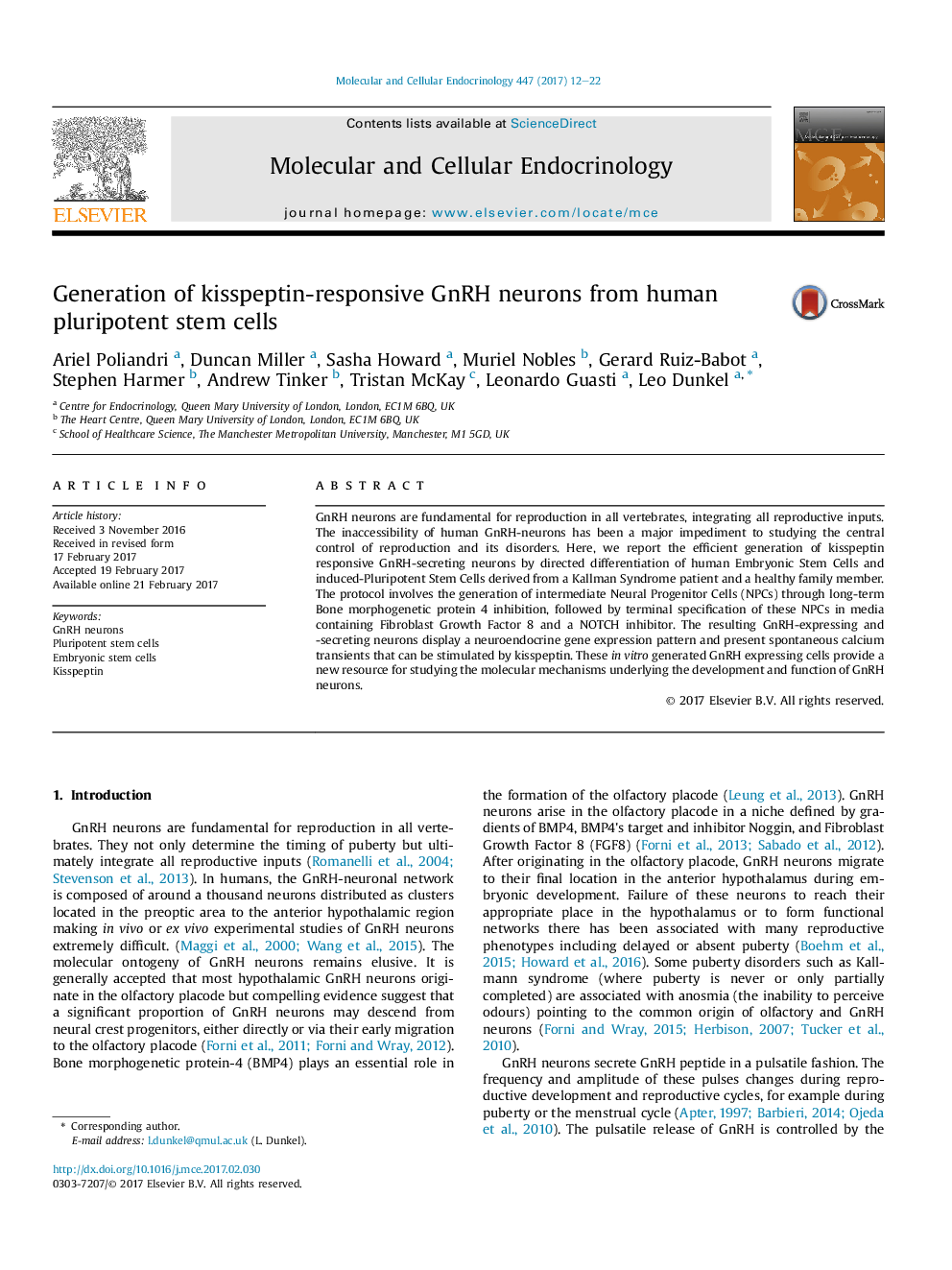| Article ID | Journal | Published Year | Pages | File Type |
|---|---|---|---|---|
| 5534147 | Molecular and Cellular Endocrinology | 2017 | 11 Pages |
â¢A protocol that consistently and efficiently generates GnRH-expressing neurons from human Pluripotent Stem Cells.â¢An intermediate step involving Neural Progenitor Cells production allows for expansion before terminal differentiation.â¢Terminally differentiated GnRH-expressing neurons present spontaneous calcium transients.â¢Spontaneous calcium transients are increased by kisspeptin, both in frequency and amplitude.
GnRH neurons are fundamental for reproduction in all vertebrates, integrating all reproductive inputs. The inaccessibility of human GnRH-neurons has been a major impediment to studying the central control of reproduction and its disorders. Here, we report the efficient generation of kisspeptin responsive GnRH-secreting neurons by directed differentiation of human Embryonic Stem Cells and induced-Pluripotent Stem Cells derived from a Kallman Syndrome patient and a healthy family member. The protocol involves the generation of intermediate Neural Progenitor Cells (NPCs) through long-term Bone morphogenetic protein 4 inhibition, followed by terminal specification of these NPCs in media containing Fibroblast Growth Factor 8 and a NOTCH inhibitor. The resulting GnRH-expressing and -secreting neurons display a neuroendocrine gene expression pattern and present spontaneous calcium transients that can be stimulated by kisspeptin. These in vitro generated GnRH expressing cells provide a new resource for studying the molecular mechanisms underlying the development and function of GnRH neurons.
Graphical abstractDownload high-res image (324KB)Download full-size image
